#railway nationalization
Explore tagged Tumblr posts
Photo

“TRADES UNIONISTS URGED TO PREPARE,” The Province (Vancouver). February 8, 1933. Page 14. ---- Should Be Ready to Take Command In Collapse, Delegate Says. ---- Trades unionists should prepare a plan of action so that they will be ready in the event of a collapse of the present structure of government and industry, it was stated at a meeting of the Vancouver and New Westminster District Trades and Labor Council on Tuesday night.
In the course of a general discussion on unemployment, Delegate T. Russell of the carpenters union stated that trades unionists, being men of practical knowledge and not theorists, have a responsibility in the crisis, and should prepare themselves.
Delegate E. S. Hougham also felt that a policy should be formulated which would provide tor full cooperation with other public bodies.
Motion that protest of the railway organizations against proposed amalgamation of the transcontinental railway systems of Canada be supported was carried unanimously. The executive was instructed to formulate along these lines a resolution to be forwarded to the Senate and the House of Commons.
A motion condemning the Provincial Government for continual reduction of unemployment relief was passed, and the committee on unemployment was Instructed to continue Its Investigations.
One delegate gave details of alleged red-tape methods of the relief department, and the gradual reduction of amounts of food and fuel received.
The dispute regarding the seating of Delegate James Gray, ex-councilor of Burnaby on the council, which has been vigorously protested by New Westminster Carpenters' Union, reached another stage when Delegate W, Moody of the Royal City body reported that his union was prepared to resign unless charges against Gray were investigated. Delegate Gray, who was present, arose in his own defense, and the discussion became somewhat heated at times.
#vancouver#vancouver trades and labor council#trade unions#union men#union politics#working class politics#collapse of capitalism#capitalism in crisis#railway nationalization#unemployment relief#relief department#workers' power#great depression in canada
1 note
·
View note
Text

Canadian National Railways travel poster
1935
#vintage camping#campfire light#jasper#canadian national railway#history#camping#maligne lake#jasper national park#1930s
251 notes
·
View notes
Text

Happy 60th birthday to a legend! The Tōkaidō Shinkansen began service on 1 October 1964, using the 0 Series pictured above. I took the photo in the National Railway Museum in York, England. It's the only shinkansen outside Japan.
#a real unit :)#the 0 Series was withdrawn in 2008#my photos#新幹線0系電車#York National Railway Museum#I had a few rides on the 0 Series#I've been in Japan that long o.0
174 notes
·
View notes
Text

Early roads west were carved through a forbidding wilderness
#Canadian National Railway#Precambrian rock#age of steam#winter landscape#Canadian Shield#forest#wilderness#CNR#CPR#passenger train#romantic travel#scenery#True North
151 notes
·
View notes
Text
The Canadian National Railway is suing a group of pro-Palestinian protesters who blocked traffic for hours last week at its main rail line in downtown Winnipeg. The suit brought by CN seeks general, special and punitive damages on top of interest and other costs, as well as a court order to prevent the group from doing so again. The protesters began to blockade CN's main train line at a railway bridge, over York Avenue near Main Street, on Nov. 20 at about 2:30 p.m., according to the statement of claim filed at the Manitoba Court of King's Bench on Nov. 21. The group dispersed after about five hours.
Continue Reading
Tagging @politicsofcanada
#cdnpoli#canada#canadian politics#canadian news#manitoba#solidarity with palestine#protests#direct action#canadian national railway#repression
105 notes
·
View notes
Text

Forest train on railway with sakura in Alishan National Scenic Area, Taiwan, Asia: Alishan National Scenic Area is in central Taiwan. It's dominated by the Alishan Mountains, which feature cloud-ringed peaks and green valleys. The area is home to Tsou aboriginal villages, known for tea production. A narrow-gauge train, part of the Alishan Forest Railway, runs through high-altitude forests. The Giant Tree Plank Trail boardwalk winds past huge cypress trees, including the fallen Alishan Sacred Tree.
77 notes
·
View notes
Text
Flying Scotsman in 2004 - A Comedy of Errors and Owners:
Ok - so this is something I've been sitting on for a while now, but I feel like with 'The World Famous Engine' now being uploaded to Ao3, now is the right time to cover this rather insane topic. See, we all know the story of Flying Scotsman and the NRM: the NRM bought the engine for the nation, and then sent it into the Works for 1 years' worth of work in 2006... One year of work that ended up spiralling into ten years and £4.2 million.
But behind that story is a rather more shocking story, and one that really needs more recognition to help people understand just how absolutely shockingly Flying Scotsman had been treated before that overhaul.

Sir William McAlpine:
Our story most likely begins under Alan Peglar, but I have a rather sneaking suspicion it actually gets interesting under McAlpine. Sir William McAlpine bought 4472 Flying Scotsman in 1972 to save the engine after Alan Peglar went bankrupt in San Francisco, leaving the engine on a US Military Base.
He brought Scotsman and had the engine restored at Derby Works in England, and then successfully owned and ran the engine for another 23 years, making him the longest-lasting and most successful of all Scotsman's owners.
Pretty good achievement!
But, during this era, Flying Scotsman visited Australia, broke the record for the longest non-stop run by a steam locomotive, pulled the Royal Train, ran on a multitude of heritage railways and mainline excursions, got an overhaul three times - including one at Barrow-in-Furness (story idea, anyone?). This is not where the worst of the issues arose from, but it does give you a good idea of the kind of work this engine was being tasked with.
And then in 1995, it was involved in an accident at Llangollen Railway. When put back into steam, smoke emerged from a crack separating the boiler and the front cab. It was deemed a total failure and immediately withdrawn from service immediately - and that's what did McAlpine in. He sold the engine off to cover some debts, and Tony Marchington
What do I think went wrong here? I have a feeling that Scotsman was run pretty haggard in Australia (which, fair - it's not always a very nice country to machines) and when refitted to his BR livery, several... shortcuts were made to get the engine back in service. All the same, this isn't where the trouble came from.
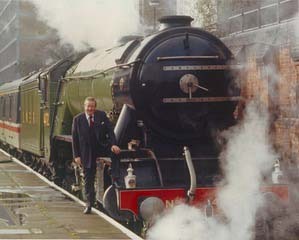
Tony Marchington:
And here's where things went south. Fast. Flying Scotsman was bought, went through a three-year long overhaul worth £1 million and then was set to work. Thing is, that overhaul had a number of red flags surrounding it - perhaps most notable being the fitting of an A4 boiler working at 250psi. Now, for those unaware - the original A1 class ran at 180psi, and the upgraded A3 class ran at 225psi. The engine was being run at a pressure it was extremely unfit to operate with.
It would be a bit like fitting a massive V12 motor to a Honda Accord. Yes, the car will move extremely fast and look impressive and move for a while, but every other piece of that car will deteriorate rapidly due to the pressure it's all under. Now transfer that to a steam locomotive - one where to reach that pressure, the firebox is under a lot of strain.
Flying Scotsman failed a lot during the Marchington era, and it's not surprising why. The poor engine was literally falling to pieces - as one NRM staffmember noted: "On our first inspection, the rear drivers had been removed to deal with bearing problems. The visiting NRM team was most unimpressed with the quality of work being done on the bearings. Other examples of poor workmanship (of which I cannot remember the detail) were evident on inspection.”
Please note, the bearings and valves had all recently been replaced.
Also note, Tony Marchington was under pressure from the shareholders of Flying Scotsman PLC - a company he set up - to make money, and so many of the fitters working on the engine may have been given far, far too many constraints in time and budget to properly overhaul the engine, in essence needing to just 'do the bare minimum to get it back in service'...
And this is the condition the NRM bought 4472 Flying Scotsman in.
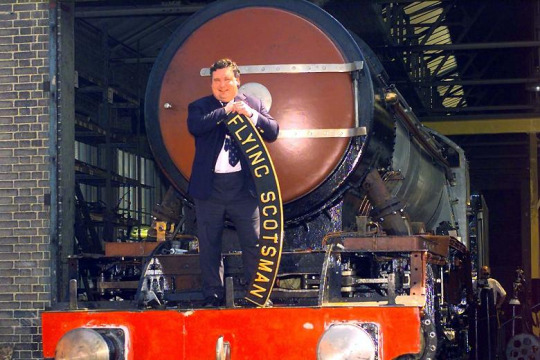
The National Railway Museum:
All of the above is an indication of the condition that Flying Scotsman was in when bought in 2004 - but that only tells about half of the story. The other half is a bunch of issues surrounding the purchase, certification and understanding of just how bad things were. And make no mistake, the NRM is not blameless in this circus - it just managed to inherit a bad situation and then fumble with it until they sat down and figured out what had happened.
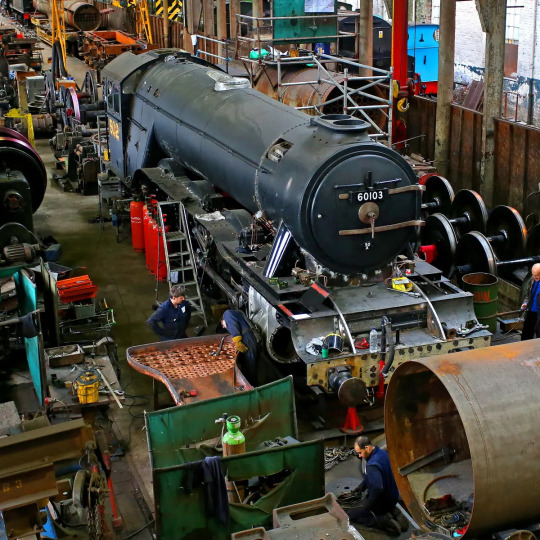
Let's take a moment to look at the AEAT report that the NRM got, then compare it to reality:
The AEAT report stated that:
"Whilst it was not possible to complete a thorough examination of the locomotive, or to witness it in steam, the condition of the locomotive has been monitored regularly as part of the VAB audit process. Taking this into consideration, it is considered that the general mechanical condition is satisfactory for continued operation, subject to effective maintenance, until the next General Overhaul in 2006. The scope of mechanical overhaul is not anticipated to be extensive but will involve strip down of the motion and axleboxes to gauge wear and remedial action. The cylinders all require re-lining and boring to nominal diameter."
The reality of the condition of the engine was far from this rather rosy portrayal given by AEAT. For starters, the engine was not properly examined, and several areas of testing were 'not possibly to be checked adequately' for a variety of reasons, including:
the locomotive was being prepared for a test run
equipment failure
4472 Flying Scotsman not being in steam
Anyone notice something off? Why exactly can the company not see how the engine is when in steam if the engine is being prepared for a test run?

Furthermore, AEAT had been the VAB (Vehicle Acceptance Body) for Flying Scotsman for 14 years by this point and finding a huge number of faults at this point very much would have raised questions about their work. More probably, the company had grown accustomed to the engine working, and simply assumed everything was satisfactory unless demonstratable to the contrary. Like the NRM admitted:
"[T]he previous owner’s VAB may not have been the best choice of inspector."
Thing is, AEAT included pictures in their report, but most of these were of the air brake compressor, locomotive air brake, tender air brake cylinders, TPWS antenna selection switch and the TPWS antenna mounting arrangements, which while critical to obtaining permission to operate on Network Rail, don't say much about the actual condition of the engine. And the photos that were of the actual mechanical parts of the engine were... telling.
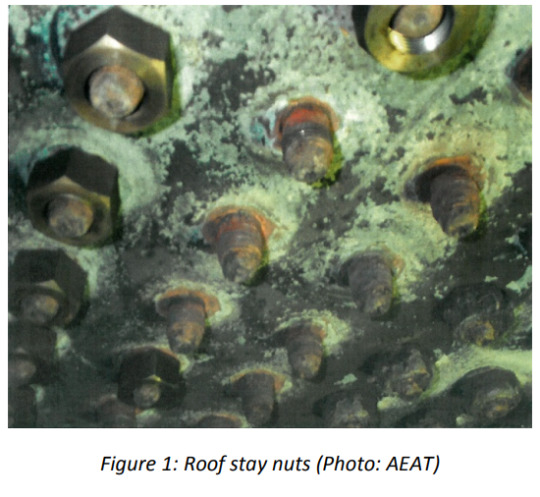
The Stay Nuts in the firebox are rusting, melting and missing. And that wasn't the only major issue with the engine - several of which were extremely dangerous:
the Robinson superheater header doors had been seal welded;
other inspection doors had also been seal welded;
Repairs to defective studs on the superheater header were needed;
the smokebox door locking mechanism was broken;
the firebox stays needed caulking;
the boiler mountings and pipework in the cab was considered dangerous;
the air brake reservoirs were overdue re-certification;
two tender springs needed replacing;
Re-metalling one crosshead was needed, which resulted in having to remove the bogie, and led to the discovery that the piston rods were incorrectly fitted to the crossheads and required extensive repairs in order to make them fit properly;
Removal of the 'belly' access door in the bottom of the boiler barrel in order to remove a build-up of some 6 inches of sludge;
one of the tender wheel tyres was flat;
the air pump needed repairs;
the vital axlebox oil pads which were long overdue for replacement;
the tender handbrake just didn't work and needed repairs;
121 boiler tubes needed replacement (2004);
the boiler itself needed replacement (2006);
Foundation ring heavily corroded and cracked;
a large number of latent fractures throughout the whole of the locomotive's frame assembly;
the valves and bearings were faulty or broken;
there was a serious crack in the right-hand cylinder;
the entire firebox itself was in desperate need of replacement;
the boiler washout plugs had been fitted with domestic gas plugs;
the wheels are all in need of re-turning;
the frame hornblocks are all cracked;
one of the driving wheels was bent;
the frame stretchers were all cracked and beyond repair;
The centre-cylinder motion bracket also had cracks;
The frames were wrongly aligned;
And the frame's horn ties were scrap, and needed to be remade.
That is thirty separate issues that the NRM discovered between 2004 and 2012 restoring the Flying Scotsman. The Flying Scotsman needed such a complete overhaul to be restored that some people argued that it would cheaper to just build an entirely new engine.
A completely new version of this engine:
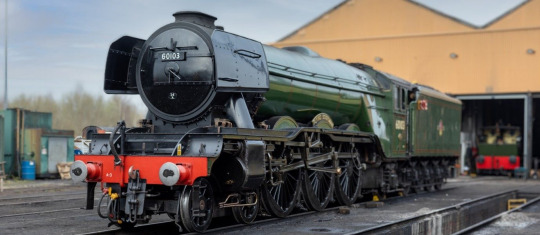
And remember, AEAT certified this engine to run on the mainline. The Flying Scotsman had turned into a literal moving death trap under its various owners, and I am not surprised it cost the NRM £4.2 million to rebuild Flying Scotsman.
In summary, 4472 Flying Scotsman was about as sick as an engine could get when it arrived at the NRM. The amount of work required to fix the poor engine was extensive - and some may argue unjustified. Personally, I disagree. Yes, Flying Scotsman cost a ridiculous amount of money to save and rebuild - but this is not an engine who would ever accept living on a plinth in a museum. This is an engine with a fascinating history filled with trials, tribulations and triumphs; and in my opinion the Flying Scotsman's place is on the mainline. Will there be a day when the old engine has to be withdrawn and placed in the NRM? Probably - it's the oldest mainline certified engine in the UK already, and it's not getting any younger. But by that same token, Flying Scotsman went through a massive, extensive overhaul to ensure that generations to come could see the majestic A3 doing what it always did best, and there's something truly inspiring about that.
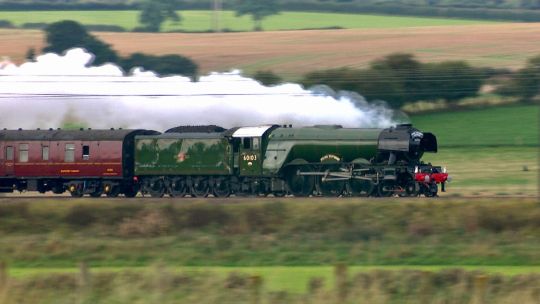
A big thank you to the NRM for saving Flying Scotsman, and an even bigger 'what the hell?' to the people who almost destroyed it by being careless.
The pictures used in this post do not belong to me. All pictures belong to their owners. If you wish to read the NRM Flying Scotsman report yourself, this is the URL, and a hyperlink to its archived form on the Wayback Machine:
#weirdowithaquill#railways#real railway stuff#Flying Scotsman#4472 Flying Scotsman#NRM#The National Railway Museum#Flying Scotsman very nearly didn't get his happy ending#There was a lot wrong#this stuff is crazy#long reads#very long post#lner a3#wayback machine
135 notes
·
View notes
Text
reminder that (at least, in my eyes) the protocol archivist is not jon.
jon’s character is intrinsically tied to his humanity and his fight throughout the series to keep it. he fought tooth and nail throughout seasons 3 and 4 of tma to remain attached to personhood and agonised constantly about becoming another monster and puppet of the fears.
perhaps a more compelling argument based entirely on real life technicalities - they have a different voice actor
#isaac speaks#tmagp#tmagp spoilers#tmagp theory#also the train to oxford is national railway not the fucking tube 😭😭😭
23 notes
·
View notes
Text

" Colors of Autumn 🍂 " //© Kenneth Hines, Jr
#Acadia National Park#Maine#United States#nature#landscape#Autumn#Fall#Forest#Trees#Leaves#Railway#Tracks#autumn leaves#fall vibes#aesthetics#wanderlust#explore#follow#discover
112 notes
·
View notes
Photo

“Unified Railways Would Save Millions,” The Province (Vancouver). February 8, 1933. Page 20. ---- WITH a unification of railway lines in Canada as proposed by E. W. Beatty, president of the C. P. R. today, some 48.000 miles of track would come under one head (C. N. R. approximately 33,000 and C. P. R. approximately 21,000). The solid lines shown on the map above are those of the Canadian National Railway, and its steamship services, while the dotted lines are those of the C. P. R. and its steamship services. The duplication of lines in many sections is clearly shown. Illustrating the saving that could be effected by their elimination. The great hotel systems, Including the C. N. R. Chateau Laurier at Ottawa and the C. P. R. Royal York at Toronto, would be linked.
#canadian national railway#canadian pacific railway#railway nationalization#railway capitalism#railway companies#railway commission#great depression in canada#pressures of the great depression#railway transportation
0 notes
Video
20240920 Abandoned Hokuriku Main Line 2 by Bong Grit Via Flickr: 刀根地区の氣比神社。山あいの集落の神社にしては鳥居はかなり豪華。境内もきれいにされていた。 Photo taken at Yan Kehi shrine, Tsuruga city, Fukui pref.
#Kehi shrine#Shinto shrine#Shinto#Shirine#Torii#Shrine's gate#Vermilion#Crest#Imperial chrysanthemum crest#Tsuruga line#Japan National Railways#Hokuriku Main Line#Abandoned Hokuriku Main Line#Prefectural road 140#Tone area#Tone#Tsuruga#Fukui#Japan#Nikon#Nikon D850#COSINA#COSINA Voigtländer NOKTON 58mm F1.4 SL2 N#flickr
12 notes
·
View notes
Text

'Explore Canada - the Canadian National Railways serves all of Canada'
Canadian National Railways travel poster (c. 1940). Artwork by Jacques Gagnier.
#vintage poster#vintage travel poster#canada#1940s#Jacques Gagnier#canadian national railways#french#mountains#railway#trains#travel#tourism#holiday
70 notes
·
View notes
Text
CN Rail’s entire Indigenous advisory board handed in its resignation Monday saying continuing the work would “mislead Indigenous Peoples as to CN’s sincerity and authenticity to reconcile.”
The statement, penned by the council’s co-chairs Murray Sinclair, former senator and commissioner of the Truth and Reconciliation Commission, and Roberta Jamieson, the first female First Nations lawyer in Canada urged the organization to make fundamental changes to the way it does business.
In an interview with Global News, Sinclair said the intent of the council was to assist them to develop their reconciliation action plan as a meaningful way forward, but after that was done, the company failed to use the council’s input.
Full article
Tagging: @politicsofcanada
#cdnpoli#canada#canadian politics#canadian news#canadian#Indigenous#CN rail#canadian national#CN#canadian national railway#reconciliation#colonialism#roberta jamieson#murray sinclair
92 notes
·
View notes
Text

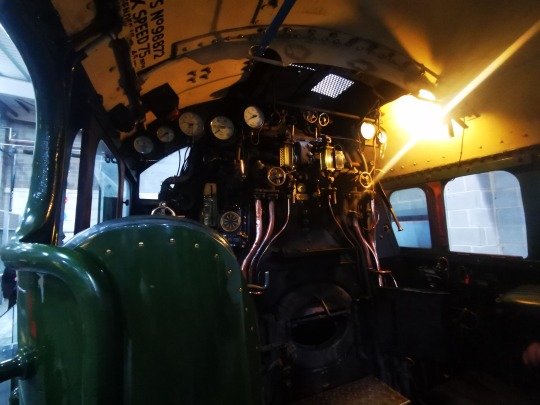


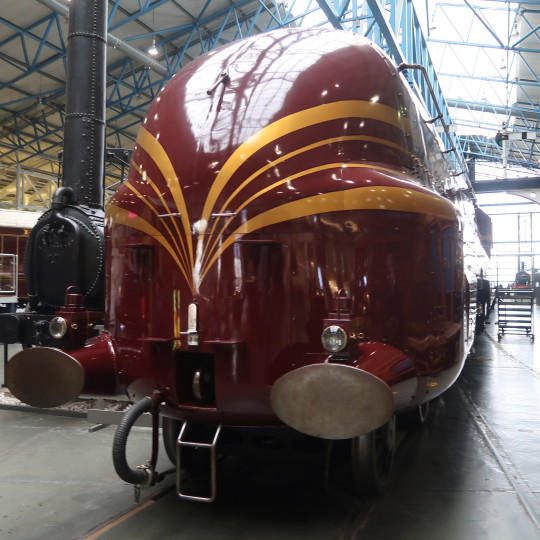
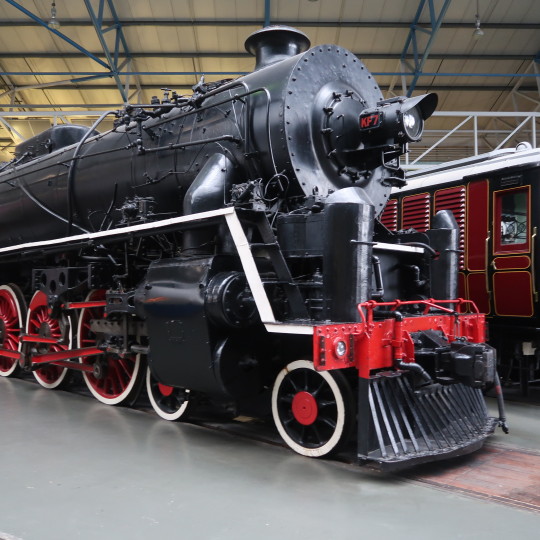
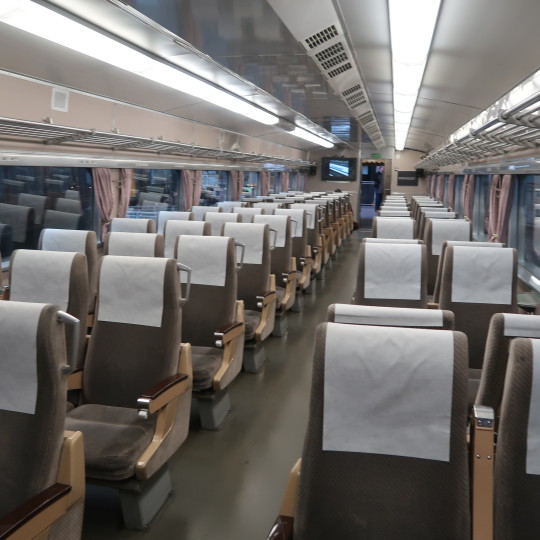

15. 3. 24
National railway museum, York
26 notes
·
View notes
Text
Traintober 2024: Day 5 - Exhibition
The NRM Stoplight System:
The engines who live at the York National Railway Museum have spent many years with their fires unlit and no water in their boilers at all. They are exhibits, always on display. Sometimes, things are changed up when a special exhibition brings in new engines or shuffles around the residents – these exhibitions also bring in a lot of extra visitors, and so the NRM developed a chart which visitors to the museum can check to see who may be interested in talking to them when they go; this chart includes a description of the engine and a stoplight colour – the colour tells visitors whether or not the engines are comfortable speaking to guests, while the blurb explains why. Here is a small excerpt from the NRM webpage:
‘Hello everyone! This is a quick explanation of the stoplight system in use at our museums. When you visit, you might notice that on the exhibit signs we have included a large, coloured disk – this is a very important part of our museum, but does not have anything to do with the history of these fabulous machines. Instead, it is there to let you know whether or not the exhibit you are looking at will be up for a conversation. Green means they will happy to have a conversation, yellow means that there may be special provisions that may stop the engine from wanting to have a chat and red means that these engines do not want to talk to our guests at all during exhibitions. Here are a few examples from our York Museum, with a short explanation behind their colour:


Stirling: Green. Of all the engines in our collection, Stirling is one of the most unique and one of the cleverest too. Built by Patrick Stirling to pull The Special Scotch Express, this engine has no limit to the knowledge he has gathered over the decades. He loves chatting up a storm and always has a fun fact for everyone – if he could become a University Professor, he’d have left us years ago!
Henry Oakley: Green. Of all the engines in the museum, Henry Oakley is one of the most polite and gentle. Henry Oakley is quite an old engine, meaning he has met many people and heard many stories throughout his career, and he loves to share them! Make sure to say hello to Henry Oakley, especially if you have small children, as he is one of the few engines to regulate his tongue!
Lode Star: Green. Lode Star is a very kind woman who loves to talk to guests; in fact, she’s so talkative that some people can’t get away from her! This is one engine who is happy to speak to everyone – it’s quite the contrast to other GWR express engine King George V, who is a red-light engine. Make sure you say hello to this kindly and chatty engine, and if you want a long conversation, ask her all about her express runs.



Coppernob: Yellow. Built in 1846, you must forgive Coppernob for being a bit of an old grump at times. This old engine has spent the vast majority of his life motionless now, and it has made him irritable sometimes. Coppernob does have a dry wit and can be very fun to talk to, however he tires easily and can be somewhat outdated in his views due to his age.
Boxhill: Yellow. Boxhill is a very cheerful and bright locomotive, however she is unfortunately entirely deaf, and only understands British Sign Language thanks to the dedication of the NRM team. If you can sign, Boxhill will be happy to reply, however because she is unable to understand anyone unless they use BSL, she is included as a yellow-light engine on our list.
Evening Star: Yellow. Unlike many other engines on this list, Evening Star is extremely uncomfortable with large crowds associated with exhibitions, and as such her colour is moved to yellow whenever a major event is happening at the NRM. She is sometimes ok for a short chat, but please be mindful of her and be aware of any signs she may exhibit of being uncomfortable.

Mallard: Red. Please do not speak to 4468 Mallard at any point during your visit during any exhibition, event or on regular opening days. Mallard was taught that she was the greatest engine ever due to her breaking the world steam speed record, and she has never managed to unlearn this view. She can be rude, abrasive and demanding, and we recommend looking, but not speaking to her.
Duchess of Hamilton: Red. The Duchess used to be a yellow rated engine, however recently she was upgraded to red due to her temper and her foul mouth, caused by her trip to the United States and later her time as a holiday park attraction. The Duchess does have her nice days, however most days she prefers to sleep, and trying to start a conversation with her may lead to her swearing or starting an argument with Mallard.
Thank you for reading this quick explainer about our stoplight system here at the NRM, and we hope to see you soon!’
During major exhibitions at the National Railway Museum, these coloured disks are often placed around the engines beyond their exhibit information board, to help tourists if they are unable to see the board. This system was developed after the Great Gathering exhibition in 2013, when Mallard and Duchess of Hamilton got into a screaming match over a question asked by a tourist that was so foul that the museum got fifty-seven separate customer complaints. It’s included in the brochures, and signed in at least twelve different languages – so hopefully, when the next exhibition occurs, guests to the museum will know not to speak to some of the engines.
Back to the Master Post
#weirdowithaquill#fanfiction writer#railway series#thomas the tank engine#traintober#traintober 2024#ttte mallard#ttte duchess of hamilton#gwr lode star#gnr stirling single#lbscr boxhill#ttte coppernob#evening star#gnr henry oakley#the national railway museum#traintober prompt
19 notes
·
View notes

